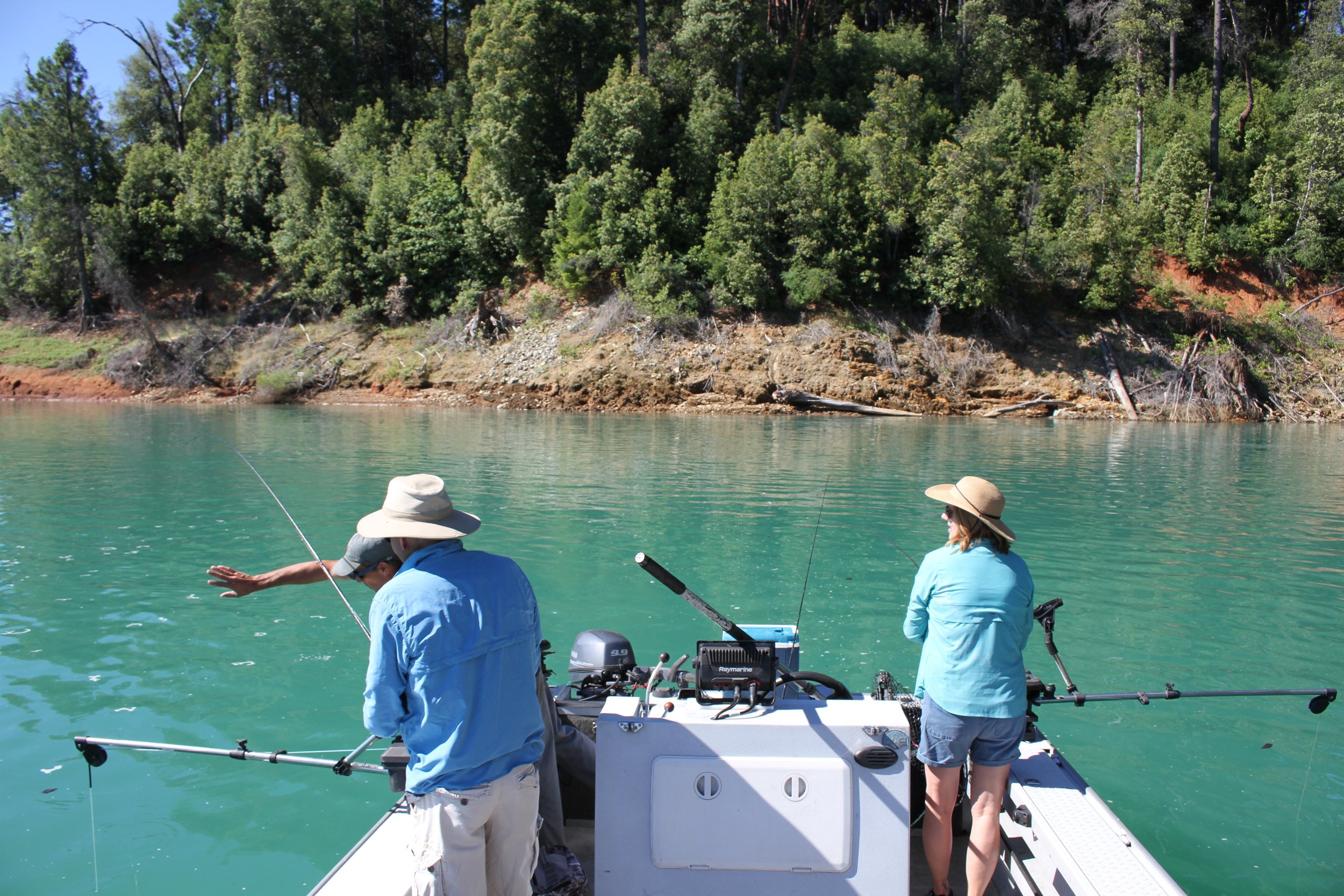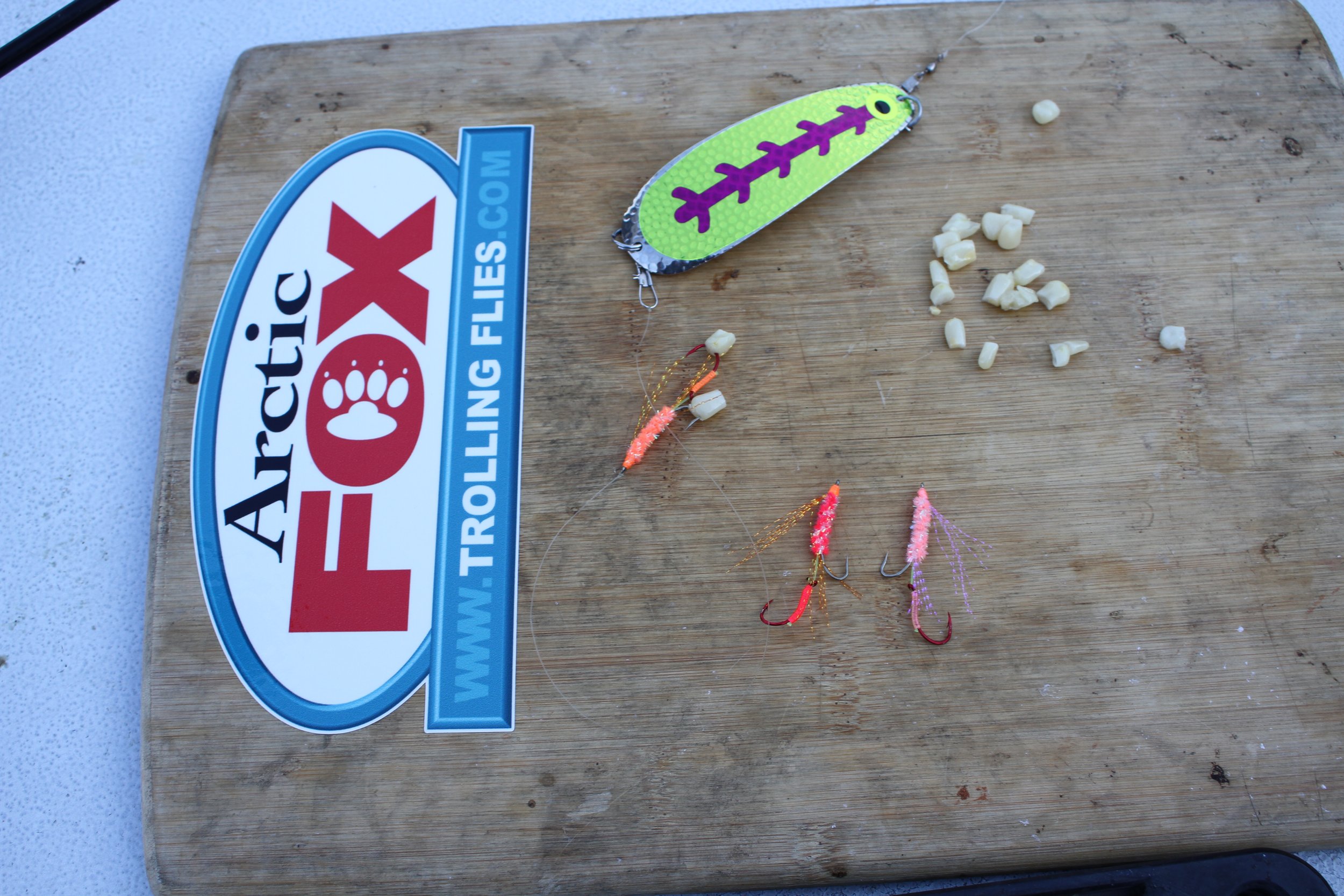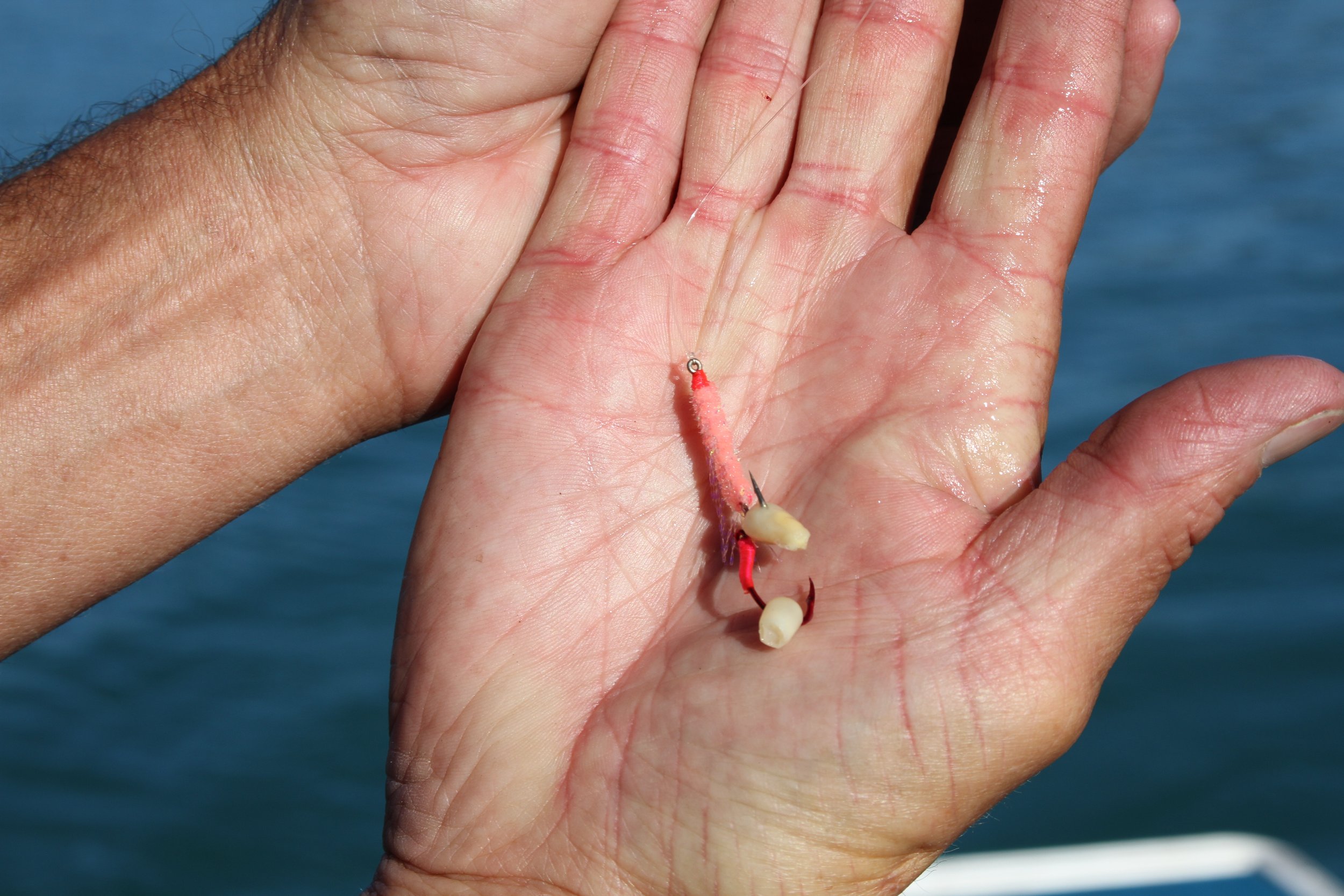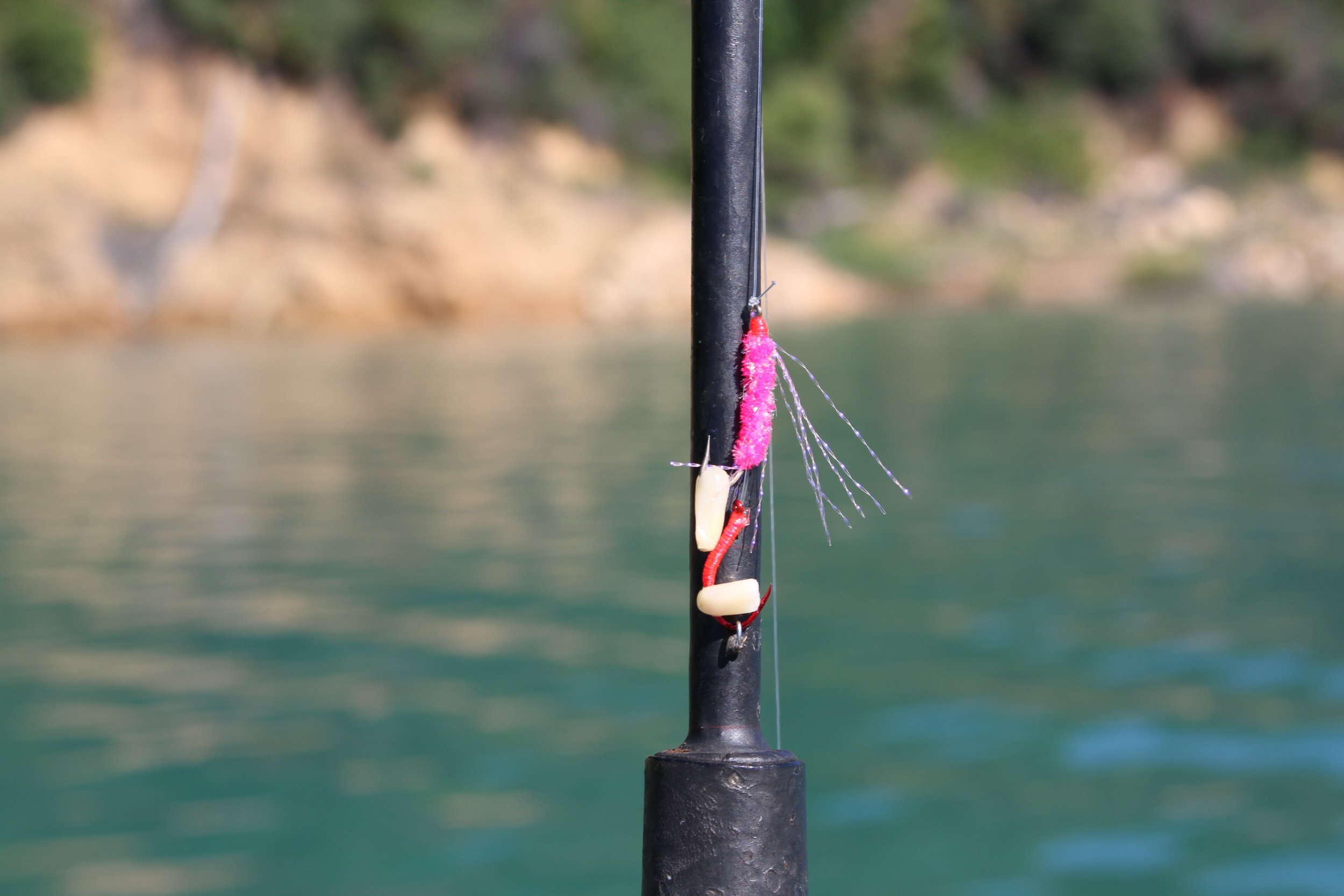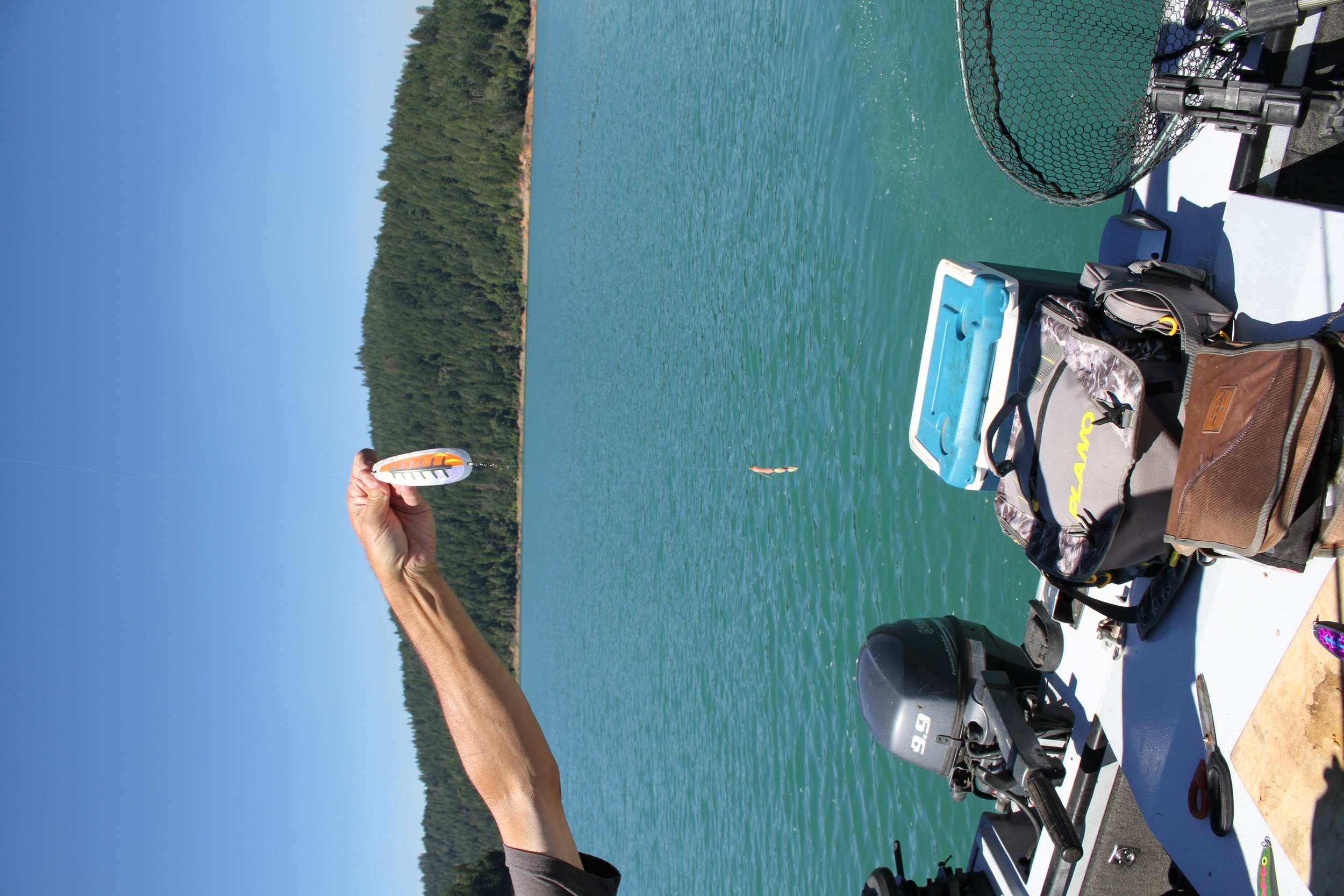A DEEPER DIVE into KOKANEE FISHING
It’s about structure and the turn
There is a difference between a casual angler who can have some good days on the water and an excellent angler who can consistently put fish in the boat day after day. One such angler is guide Brett Brady (fishbarebones.com) who has been guiding for 25 years on local rivers and lakes. In a recent conversation Brett described himself to me as a structure fisherman. I had asked why he chose the location we were fishing, and he said he was trolling the structure.
On a recent trip to Bullard’s Bar Reservoir, rather than focus on the fishing I spent the trip watching Brett and how he was fishing the lake. The results he produced were in marked contrast to many of the other boats on the water. Brett has been fishing this lake for over 25 years and in his mind's eye, knows the terrain. He has a very sophisticated fish finder that will verify if the fish are present on the structure he is scouting.
STRUCTURE FISHING
A pair of kokanee that were hooked while trolling right to left beside the point in the distance. Note they were hooked on the shady side of the point. Also, these fish were caught after Brett changed course away from the point after passing over the schools that showed on the screen below. This is an example of a long sloping point across a flooded river channel. There is current coming from the incoming river in the distance. On this day there were multiple schools of kokanee on the west side of this point. Two weeks later there were no fish in this location. The schools move, you need to scout.
The brown streaks on the right screen are schools of kokanee adjacent to the point pictured above.
Among the factors Brett relies on are sun, subsurface currents, wind direction and water temp. The structure he is most interested in are points extending into the lake. These can be major points such as Garden Point on the lake or just a slight bump on a shoreline dropping steeply into the lake. The currents he is factoring into his calculation can be from colder incoming streams, water being drafted from the reservoir or wind driven currents across the top of the lake. Fish will tend to hang behind a point out of the current. This structure can also concentrate food drifting on the current.
An example of steep points. Sun on one side shade on the other. Be sure to scout these features looking for schools of kokanee.
Note the kokanee on the same side of both structures in this screen shot. The 2.9 mph speed is a scouting speed not a trolling speed.
Another variable that comes into play is the angle of the sun. Fish do not have eyelids. At first light there is no glare and the bite is usually quite good. As the sun is rising mid-morning, it can be shining into the eyes of the fish, in effect blinding them, if they are looking into a current coming from the east. Brett explains this is why in some locations on Bullard's Bar the bite will stop around 9:00 am or so. Once the sun gets higher, or the wind puts a ripple on the surface, the glare is gone and the bite will resume.
A minor “Bump” of a point dropping steeply into the lake. Brett’s approach is to set up the rods out over deep water. Once everything is set, he will drive straight into the shore off to one side of the point. When he is over the contour line, at the depth the fish were showing on his graph, he will make a 90 degree turn to parallel the shore. Once past the “point” he makes another 90-degree turn heading away from the shore. This double hook-up came just after the boat headed away from the bank. The second 90-degree turn was regularly the most productive for the fish to commit. You have to have short setbacks from the down rigger and only a couple of rods in the water, to make this maneuver without tangles.
The same location as above, 3 weeks later and 20 feet lower.
Don’t be a “Dead Ahead Ted”
In a recent conversation with kokanee guide Josh Fontaine we discussed his techniques for kokanee. The number one comment I came away with was “Its the turn that gets the fish to commit”. He will be trolling and see a school of kokanee below. If he does not get a hit as his flies move through the fish, he will continue his course for a bit then turn 90 degrees, It is the turn when he gets the majority of his fish. Josh is convinced that kokanee will follow a lure for quite a distance. If he maintains a steady course and speed the fish will just follow. “Its the turn”.
He pays attention to which side of the boat gets hit. The fly on the outside of the turn speeds up and the inside fly slows down on the turn. Even a slight speed change will affect the dodger’s action. If the fish are consistently hitting the outside or the inside, he will adjust his speed up or down looking for the ideal speed. J and A Guide Service
Both Brett Brady and Josh Fontaine are on my “Pro Staff” and their “go to” kokanee lures are the Arctic Fox “Crystal Bullet” flies. The Flo Orange fly above shows the way they rig them up with corn. Both anglers use RB Tackle dodgers.






